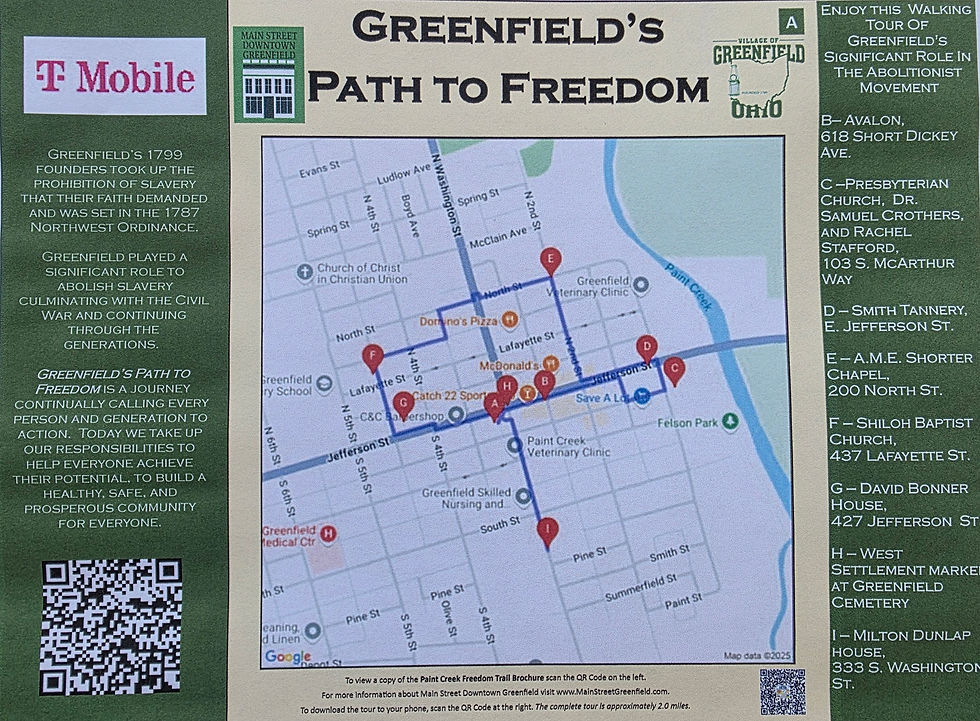Step into History: Greenfield's Path to Freedom Walking Tour Coming Soon!
- director1186
- Aug 13
- 2 min read
Greenfield’s Path to Freedom: A Walking Tour Through History

Get ready to walk the same streets as abolitionist heroes and freedom seekers. Greenfield's Path to Freedom Walking Tour is coming soon, offering a powerful journey through our town's remarkable history.
This isn't just a walk; it's a step back in time to an era when Greenfield was a beacon of hope on the Underground Railroad. You'll visit historic sites like the Smith Tannery, a safe haven for those escaping slavery, and the Milton Dunlap House, where Frederick Douglass once found refuge.
Discover the stories of courageous individuals who fought for justice and equality, from the ministers who dared to preach against slavery to the community members who risked everything to help others.
Stay tuned for more details on the official launch. Get ready to explore the history that shaped our town and continues to inspire us today.
Greenfield, Ohio, holds a remarkable place in America’s fight for freedom. Founded in 1799 by settlers who opposed slavery — a belief rooted in the 1787 Northwest Ordinance — this community became a vital stop along the Underground Railroad and a home for courageous abolitionists.
Soon, you can explore this powerful history through Greenfield’s Path to Freedom Walking Tour, which highlights key locations and the people who shaped our town’s legacy of justice and equality.
Stops Along the Trail
Smith Tannery – Built in 1821, this home and tannery served as a safe haven for freedom seekers and was home to leaders in the Greenfield Anti-Slavery Society.
Presbyterian Church & Rev. Dr. Samuel Crothers – Site of the first sermon openly denouncing slavery and the organization of the Greenfield Anti-Slavery Society.
Milton Dunlap House – Where Frederick Douglass recovered from an attack and delivered impassioned speeches that inspired many to join the abolitionist cause.
Avalon – Once a stop on the Underground Railroad, it is believed to have sheltered Eliza Harris, whose story helped inspire Uncle Tom’s Cabin.
David Bonner House – Famous for its clever diversion that allowed freedom seekers to safely escape during a surprise visit from slave catchers.
Shiloh Baptist Church – Founded in 1866 and now being restored as a lasting symbol of faith and freedom.
A.M.E. Shorter Chapel – A spiritual and community hub, central to civil rights progress in Greenfield.
West Settlement Marker – Commemorates Augustus West and the African American farming community he helped establish.
Why This History Matters
Greenfield’s role in the abolition movement didn’t end with the Civil War. Our community’s “Path to Freedom” continues today, calling on each generation to work toward a safe, healthy, and equitable future for all.




Comments